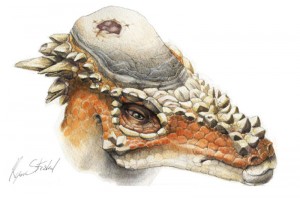Morphometrics is a horrible word, but refers to a technique that is gaining increased traction in palaeontology in recent years. It essentially is a way of measuring anatomy, or specific aspects of anatomy. An extension of it is called geometric morphometrics, and this relies on using co-ordinate points on fossils to analyse things like shape variation.
The newly minted Dr Christian Foth had a study out earlier this year that did a kind of meta-analysis of morphometrics, using theropod skulls (the group including dinosaurs like T. rex and Troodon, as well as modern birds) as an example. A lot of research has gone into using morphometrics to look at patterns in theropod skull variation through time, as looking at these evolutionary patterns is not only awesome, but can also tell us about their ascent to success through time.

